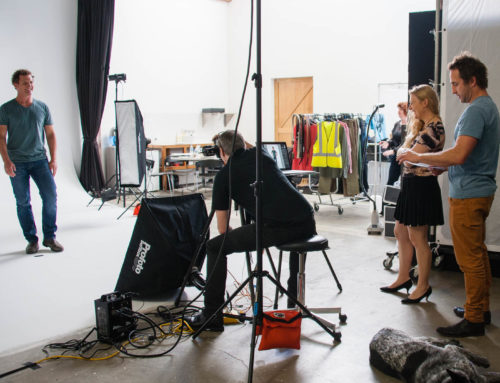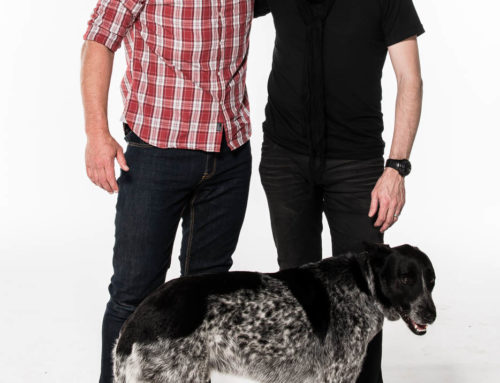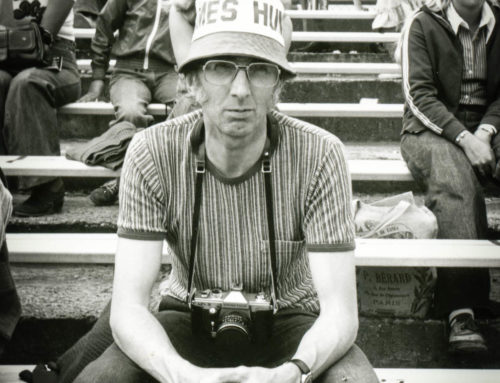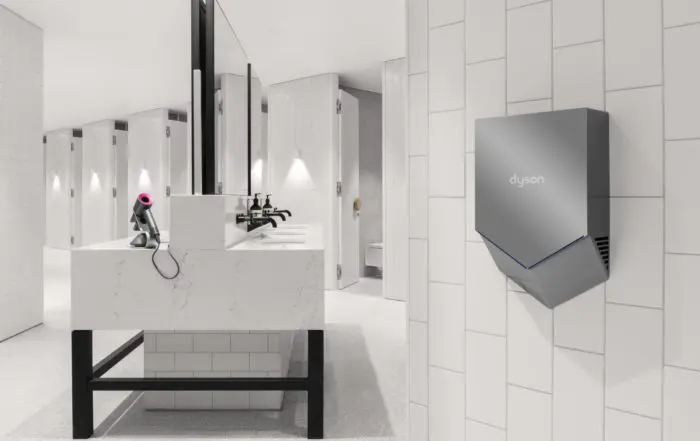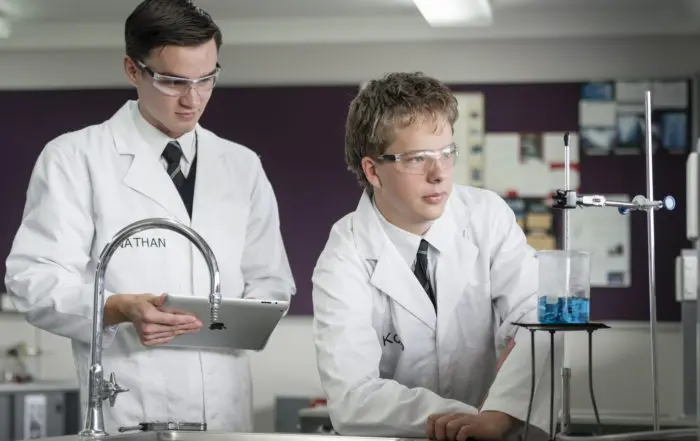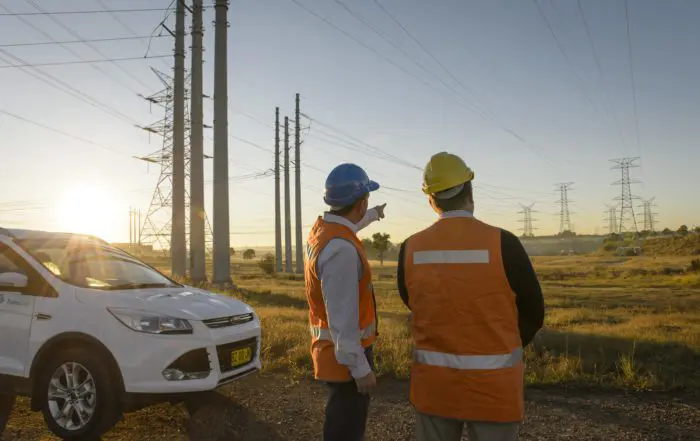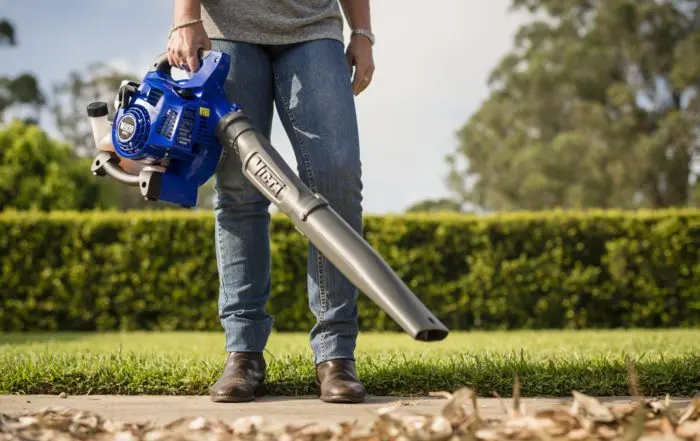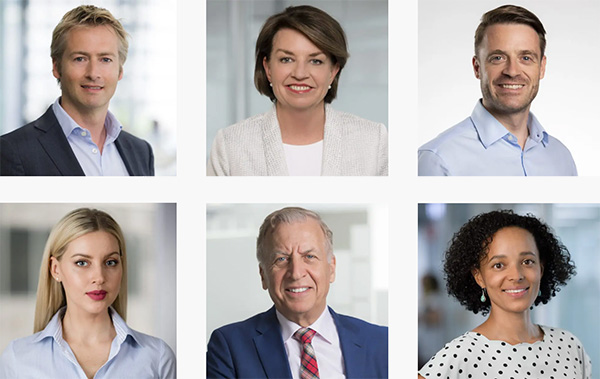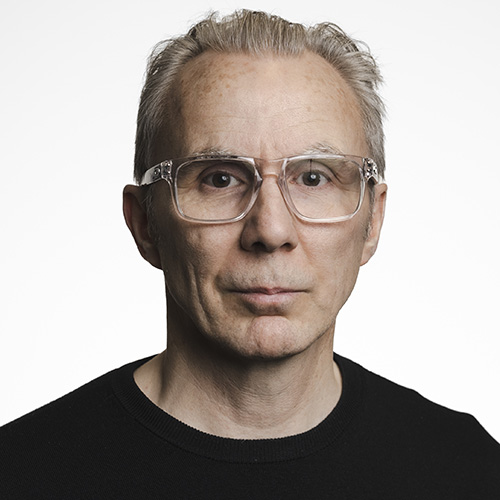
Shooting The Breeze is a photography blog by Gavin Jowitt, an award-winning Sydney-based photographer, offering valuable articles and advice on corporate, industrial, and architectural photography; life and photography in Sydney; and running a successful photography business.
A day in the life
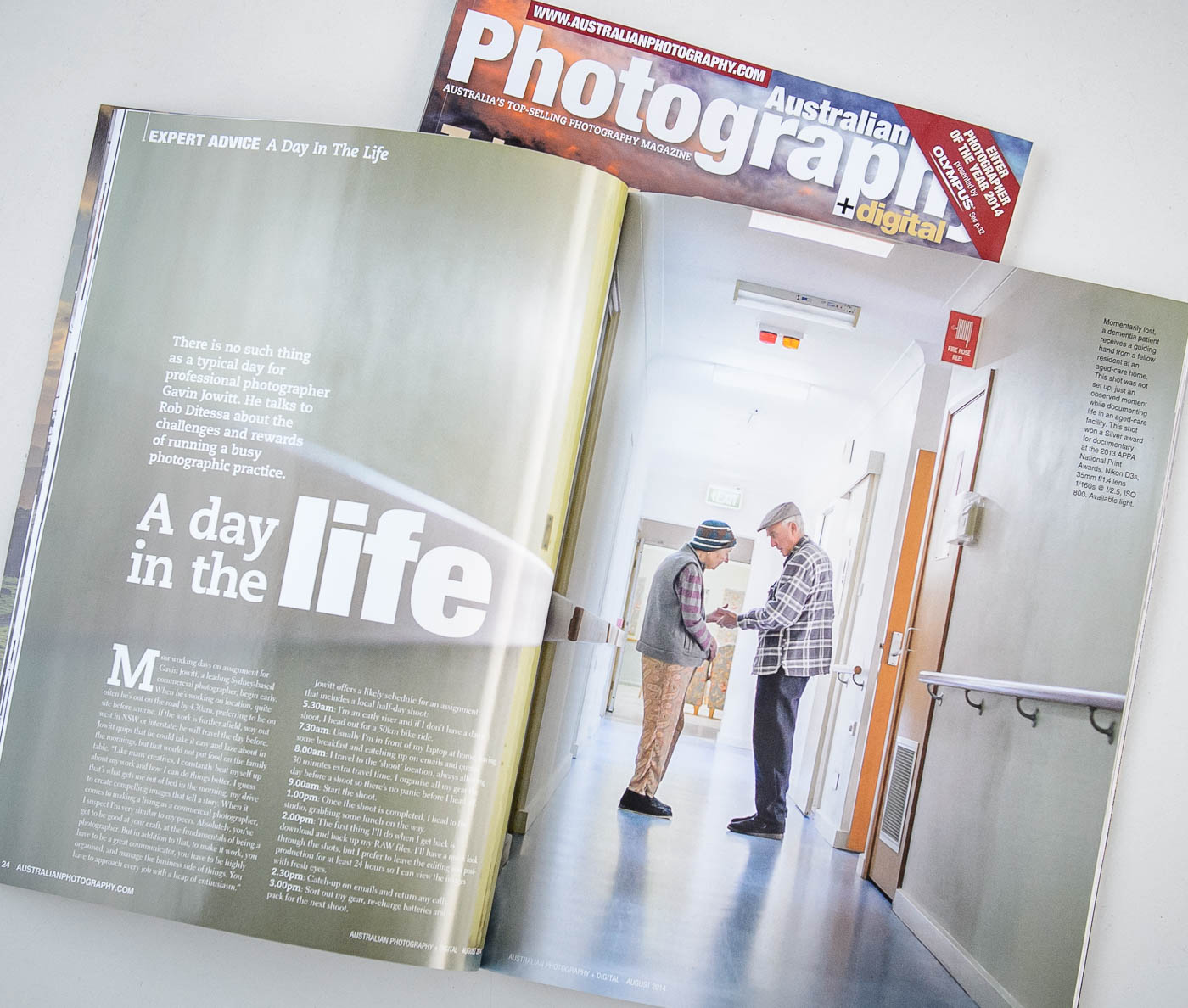
There is no such thing as a typical day for professional photographer Gavin Jowitt. He talks to Rob Ditessa about the challenges and rewards of running a busy photographic practice.
Most working days on assignment for Gavin Jowitt, a leading Sydney-based photographer, begin early. When he’s working on location, quite often he’s out on the road by 4.30am, preferring to be on site before sunrise. If the work is further afield, way out west in NSW or interstate, he will travel the day before. Jowitt quips that he could take it easy and laze about in the mornings, but that would not put food on the family table. “Like many creatives, I constantly beat myself up about my work and how I can do things better. I guess that’s what gets me out of bed in the morning, my drive to create compelling images that tell a story. When it comes to making a living as a commercial photographer, I suspect I’m very similar to my peers. Absolutely, you’ve got to be good at your craft, at the fundamentals of being a photographer. But in addition to that, to make it work, you have to be a great communicator, you have to be highly organised, and manage the business side of things. You have to approach every job with a heap of enthusiasm.”
Jowitt offers a likely schedule for a day that includes a local half-day shoot:
5.30am: I’m an early riser and if I don’t have a dawn shoot, I head out for a 50km bike ride.
7.30am: Usually I’m in front of my laptop at home, having some breakfast and catching up on emails and quotes.
8.00am: I travel to the ‘shoot’ location, always allowing 30 minutes extra travel time. I organise all my gear the day before a shoot so there’s no panic before I head off.
9.00am: Start the shoot.
1.00pm: Once the shoot is completed, I head to the studio, grabbing some lunch on the way.
2.00pm: The first thing I’ll do when I get back is download and back up my RAW files. I’ll have a quick look through the shots, but I prefer to leave the editing and postproduction for at least 24 hours so I can view the images with fresh eyes.
2.30pm: Catch-up on emails and return any calls.
3.00pm: Sort out my gear, re-charge batteries and pack for the next shoot.
3.30pm: The rest of the afternoon is usually spent on post-production, preparing quotes, invoices and planning for future shoots (ie. travel arrangements, shot lists, logistics).
7.00pm: After dinner with my family I spend a couple of hours working on post-production, business development, reading articles and blogs, responding to emails.
No typical days
Taking a peek at a day’s diary of a professional, or spending the day with them, will reveal what they do on a particular day. But Gavin Jowitt explains that opening his diary, or any professional shooter’s daily record, on any one day will not offer much insight into their overall practice and business. For a professional photographer, says Jowitt, there’s no such thing as a ‘typical’ day, because every day ends up being different. On the other hand, it will belie the popular myth of a professional photographer’s work based on what you might see on television, where a bevy of assistants prepare everything for the master shooter, who conjures best-selling images with a word to the model and the snap of the motorised shutter.
Jowitt reflects on his psychological approach. “It’s really interesting because when I start shooting, it’s almost like flicking a switch where I turn off from everything else such as planning, logistics, business management, all those sorts of things buzzing around my head all the time. I focus on the task at hand – photography – and that can be at any time of the day or night. There’s never any real structure to the day. You get used to it, pushing yourself, responding to a client, working on a client’s timetable.”
Often Jowitt turns up at a location he has not worked in before and he has to pull into the shoot people who may not want to be involved, or else he finds himself getting in the way of a worker trying to do their job. For a shoot at a goldmine in far west NSW Jowitt travelled to the site the previous day. After negotiating access, he reconnoitred the site so that later he had the evening to plan different shots, and how and where to take them on the shoot the next day. The client, a medical insurance fund, had a very clear view of what they wanted to achieve using creative concepts featuring people to showcase topics about wellbeing. The shoot called for real people set against the mining landscape, mines and heavy equipment. He had to employ the various techniques of different genres from portrait to landscape. The challenge was managing people at different times, and logistics, to be at the right place at the right time, or avoiding a situation, for instance, when a dump truck was tipping its load out. Sometimes, an opportunity for an interesting shot will emerge, and he needs to either negotiate with a site manager, the safety manager, or with a worker whom he wants in the shot. “It’s all about striking that balance between having to work creatively, but on the flipside having to negotiate and be very diplomatic around people to make things happen,” he adds.
Planning the shoot
Planning is critical, though it’s sometimes a luxury. Jowitt ideally likes to plan every shoot, to know roughly its time and duration. But it all depends, he says, on the job and the client. Sometimes the client will give him a specific shot list. Other times, he makes the decisions. For instance, he talked about an upcoming assignment for a long-standing client.
“Here I’ve got a client who has the confidence in me that I’m going to deliver a selection of shots that tells the story of the location, the people working there and their safety. The job will be to communicate their core values using that site. There’s no planning I can do for that. I can only run through my head some ideas of what I might be able to try. The reality is that I need to get there early, look around, and while I’m working on one shot, be thinking, ‘OK, what can I do next?’ That’s completely an unplanned shoot.”
When he works with an assistant Jowitt always tells them to tap him on the shoulder if he gets stressed and cranky. With so many things to handle and the potential for things to go wrong, you can get frustrated. He says he ‘compartmentalises’ his thinking. When a professional with a busy practice is working, he is single-mindedly focusing on the immediate assignment, and for that moment he has to dismiss from his mind other worries about business. “I run a business. I don’t have the luxury of having some administrators, or managers, or producers. Like most professional photographers, I’m self-contained. There’s always something to be done. It’s never quite as straightforward as you’d like it to be, but it’s a fact of life, and it has to be done, like taxes, insurance, and paying the rent.” He does his own day-to-day book-keeping, but an accountant handles the big picture work.
Handling the paperwork
“The quoting and invoicing process I’ve very much stream-lined now because I’ve moved that onto a cloud-based accounting system, which allows me to put together a quote very quickly. Then I can invoice very easily from it, and it’s all in my system. I can do that anywhere, when I’m on the road or sitting in an airport. I can put together quite a complex quote with all my terms and conditions tied into it. That’s an area that was very time-consuming.”
He stresses that it’s critical for any professional to quote properly with the full terms and conditions, so that there is total clarity about what they are providing to the client. Jowitt says there is always a risk of quoting quickly and not understanding the brief. You should do a quote promptly as well because quite often you can win a job while a client is waiting for other quotes to come in.
Marketing is important and, Jowitt says, the hardest thing of all. “It takes the lowest priority, but it’s crucial. Even when I’m working flat out, I’m spending time on marketing. You’ve got to make sure you’re in front of the right people, and the right people are seeing your work. These days a lot of my work comes direct from a client, as opposed to an agency. In earlier years it was more that a design agency would commission you. Now clients manage their own content far more.”
Today he works at being visible by ensuring he has a presence in social media with a website www.gavinjowitt.com and also inviting people to follow him on Instagram instagram.com/gavinjowitt
On average, Sydney photographer Jowitt spends a few hours a day on the business side of his practice, sometimes fitting it in between other work. Sometimes you get a clear day and you can catch up on this or that, he says.
This article originally appeared in Australian Photography Magazine.
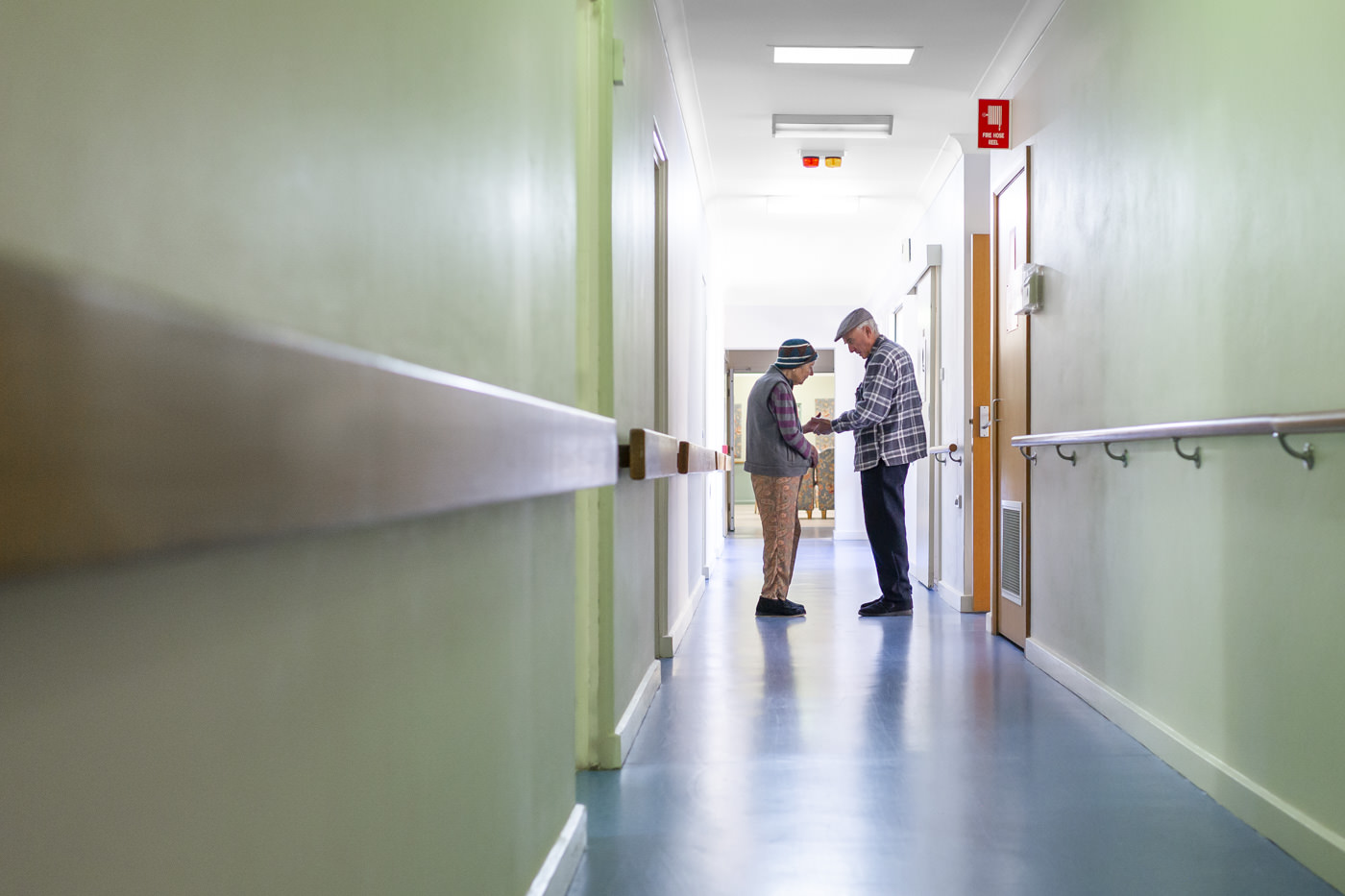
Momentarily lost, a dementia patient receives a guiding hand from a fellow resident at an aged-care home. This shot was not set up, just an observed moment while documenting life in an aged-care facility. This shot won a Silver award for documentary at the APPA National Print Awards.
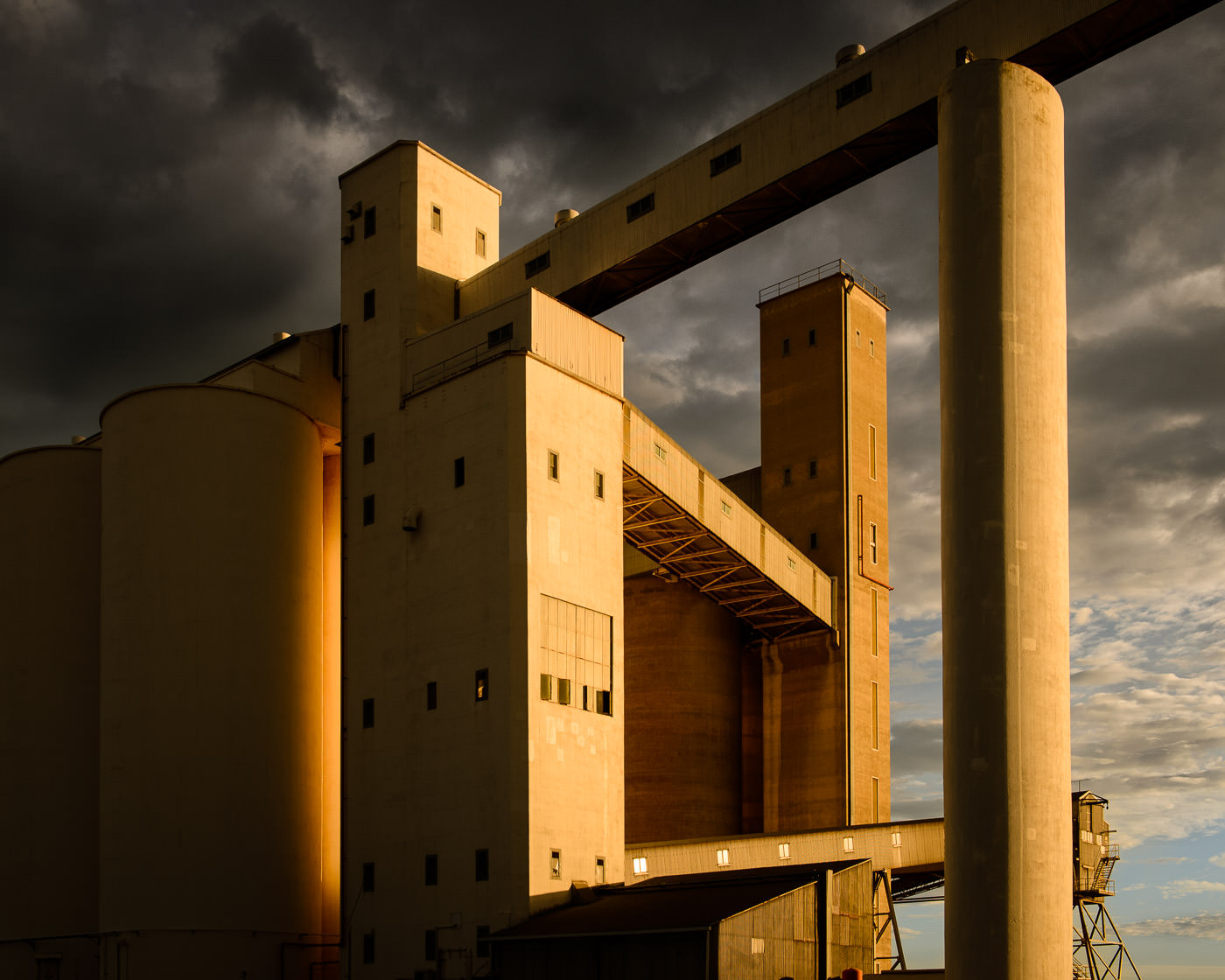
Grain silos at Port Pirie, South Australia. A slightly surreal moment which occurred at sunrise whilst Jowitt was out shooting ‘location’ shots.
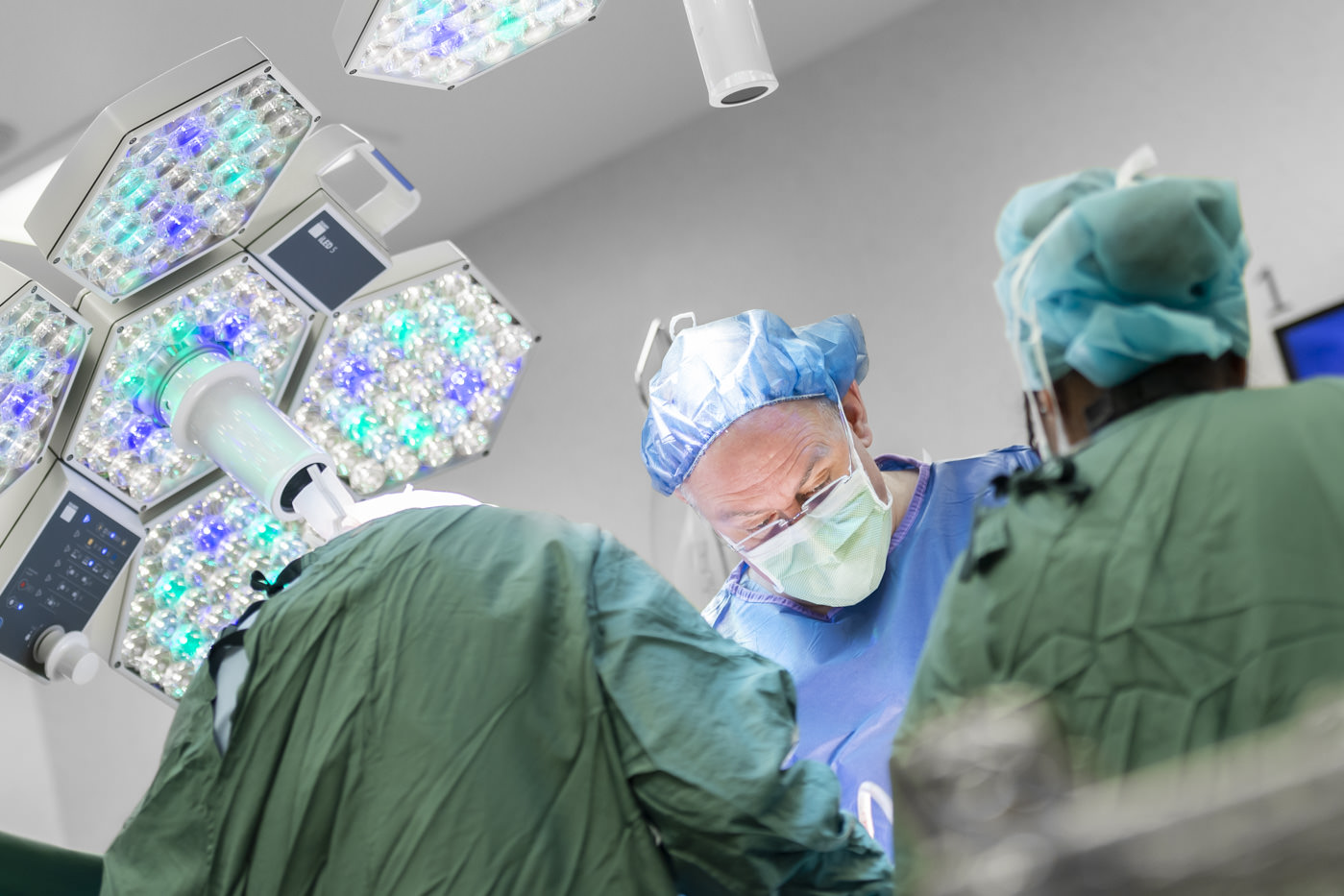
A surgeon operating on a cancer patient at Cabrini Hospital in Malvern, Victoria. Jowitt says, “I was scrubbed in and shooting during a real operation. In this type of situation you have to know the ground rules before you start. For this shot I wanted to see the surgeon’s eyes, which meant crawling around on the theatre floor to find the right angle!”
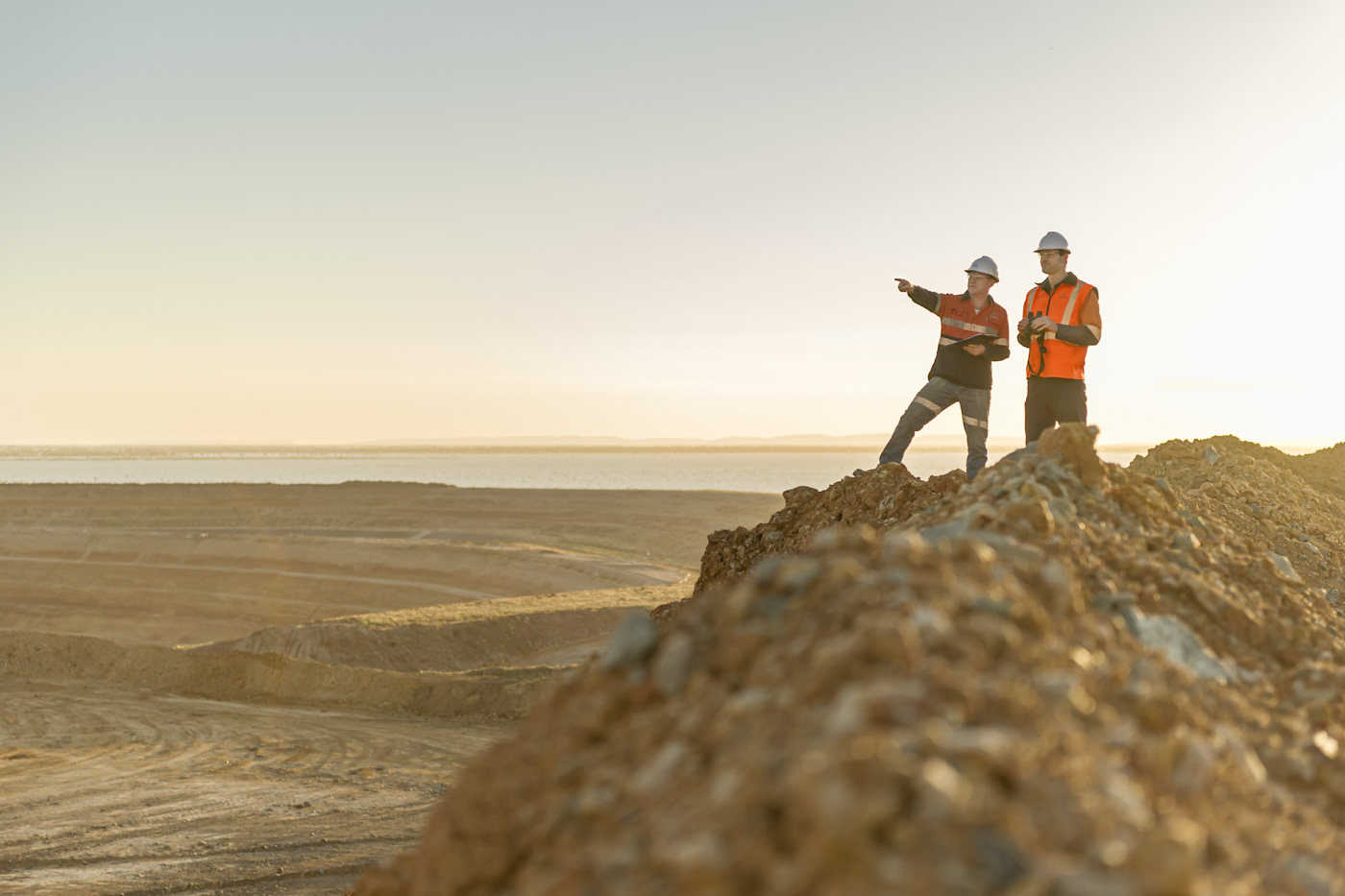
Environmental engineers at a gold mine near West Wyalong, NSW. Jowitt explains, “I wanted to get Lake Cowal into the background of the shot so I had to find an appropriate and safe location to place my subjects. At sunrise you get the perfect light for only a brief period. On industrial sites I always carry two-way radios so I can direct my subjects when I’m shooting from a distance.”
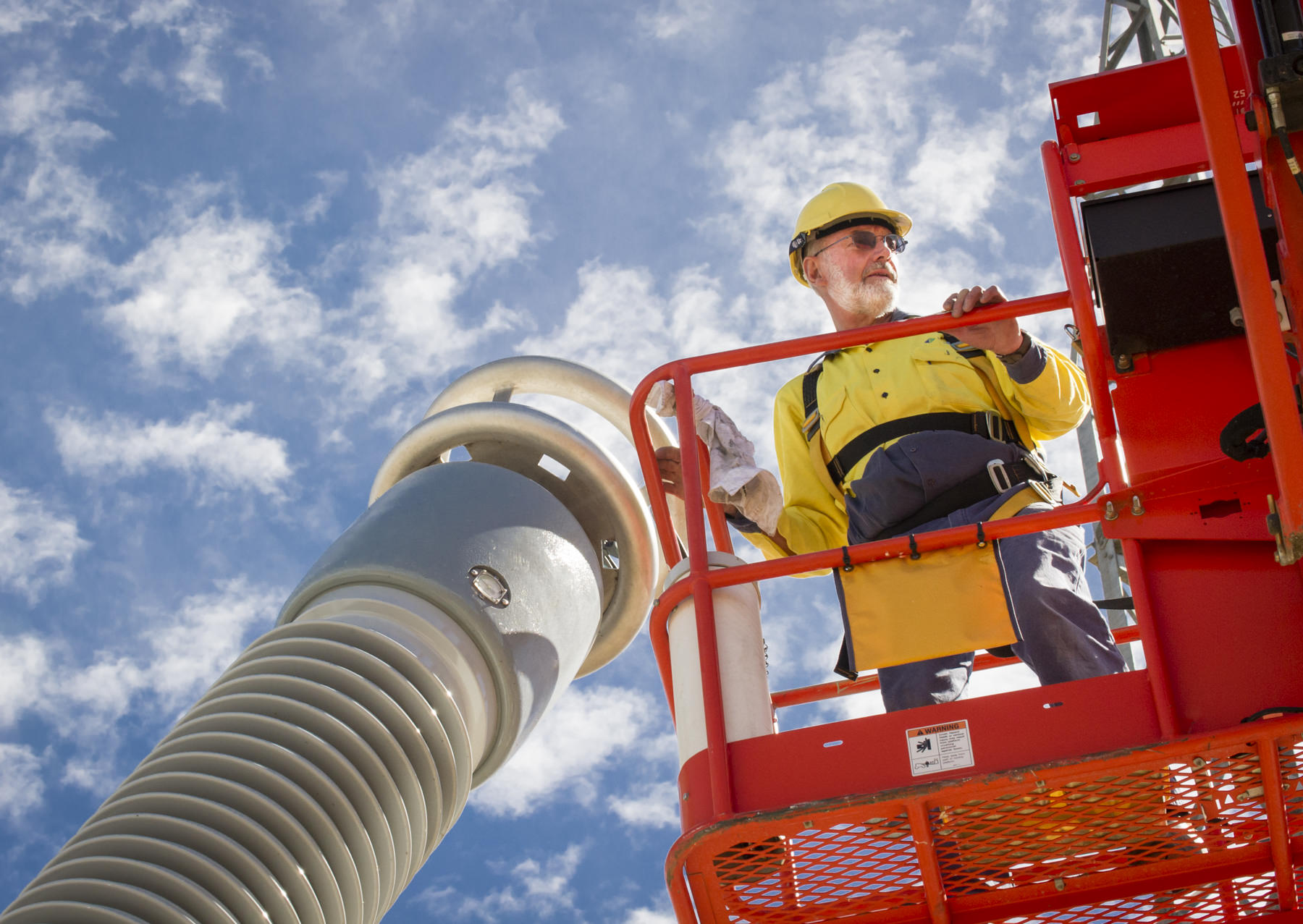
An engineer at work in a substation. Jowitt says, “Here’s another example of working with someone who is doing their job in a messy environment. Shooting upwards allowed me to achieve a clean background using the sky, creating a simple and graphic shot.”
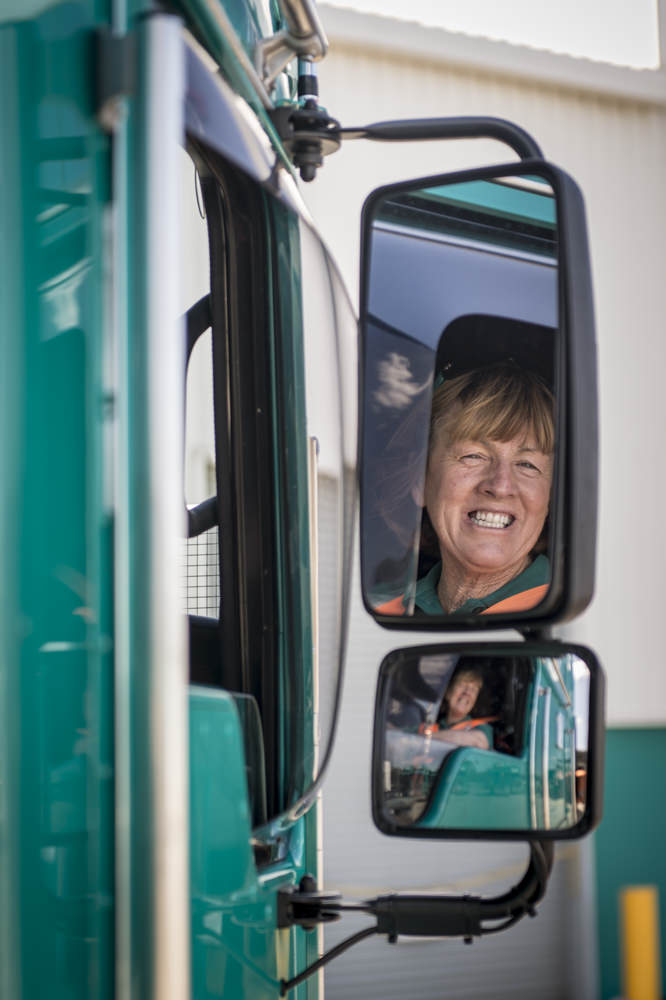
“This was shot for a magazine story about this truck driver. I’d covered off the shots of her with the truck, but I wanted to get a shot that focussed more on her and less on the truck. A borrowed step ladder allowed me to get myself in the right spot,” says Jowitt.
About the author
Gavin Jowitt is an accomplished corporate communications and branding professional with over 30 years of experience as a creative director and photographer. Awarded Australian Commercial Photographer of the Year in 2019, Gavin has built a reputation for delivering high-quality photography that enhances stakeholder communication. Gavin works with a wide array of public and private sector clients, guiding them in creating versatile photography libraries while offering extensive corporate, industrial, and commercial photography services throughout Australia.
Recent posts
Victoria Cross: Photographing North Sydney’s New Metro Station
Photographing Victoria Cross station captured its sleek design and functionality, showcasing how it transforms North Sydney’s urban landscape and connectivity.
The Art of Clean: Why Dyson Demands the Highest Quality Product Photography
Dyson's unwavering commitment to visual excellence and how it has shaped their brand identity in the minds of consumers.
Tips for Planning and Arranging a Photoshoot at Your School
In today’s digital age, visual content is one of the most potent ways to engage and inspire prospective students, parents, and staff. Whether for a new school prospectus, website, or social media, professional education photography [...]
Transgrid’s Innovative Use of Photography
Transgrid is illuminating the human and technical side of Australia's energy infrastructure through captivating visual storytelling.
The Power of Lifestyle Product Photography
A deep dive into the world of lifestyle product photography, with a focus on Victa Australia's journey to creating powerful visual connections with their customers.
Sydney Photographer / Featured Service / Corporate Headshots in Sydney
As a professional Sydney-based photographer specialising in corporate headshots, I recognise the significance of top-quality images for building the professional profiles of your key personnel. My expertise is crafting professional headshots highlighting confidence, character, and professionalism.
> Headshot pricing and book online
